The Ten Most Outrageous Tiger Electronics Handhelds and Toys
In the last few years, Tiger Electronics has made waves when it released reissues of its popular LCD handheld games from the 80s and 90s. For a time, Tiger Electronics dominated store shelves in the 90s as they produced a series of cheap handheld games. Each of these games sold for a fraction of the price that a game for one of the major consoles. So, they became the popular alternative to Gameboy and Game Gear, even if they paled in comparison.
Tiger Electronics kept its LCD games relevant by swooping in for licensed products on the newest and greatest movies and games. Thus, consumers quickly saw games for hit movies like Jurassic Park and the Karate Kid. Likewise, Tiger Electronics pulled on the heartstrings of those who loved the older arcades with their versions of Pac-Man and the like. With so many licenses, there is no surprise that Tiger Electronics was ever-present in the handheld space.
However, Tiger Electronics made not only handheld LCD games but also many other electronic toys. Their most notable endeavors outside of the LCD games were the Talkboy and the Furby. Tiger Electronics also created several action figures under the Tiger Toys label.
However, not every one of their endeavors paved the way to runaway success. Tiger Electronics experimented and tested the waters on several occasions, which led to some dumbfounding toys. Some simply defied their standard price model, while others reached further than what Tiger Electronics could achieve. Then, others simply deceived their customers into purchasing their toys.
Presenting the most outrageous handhelds and toys from Tiger Electronics
10. King Kong
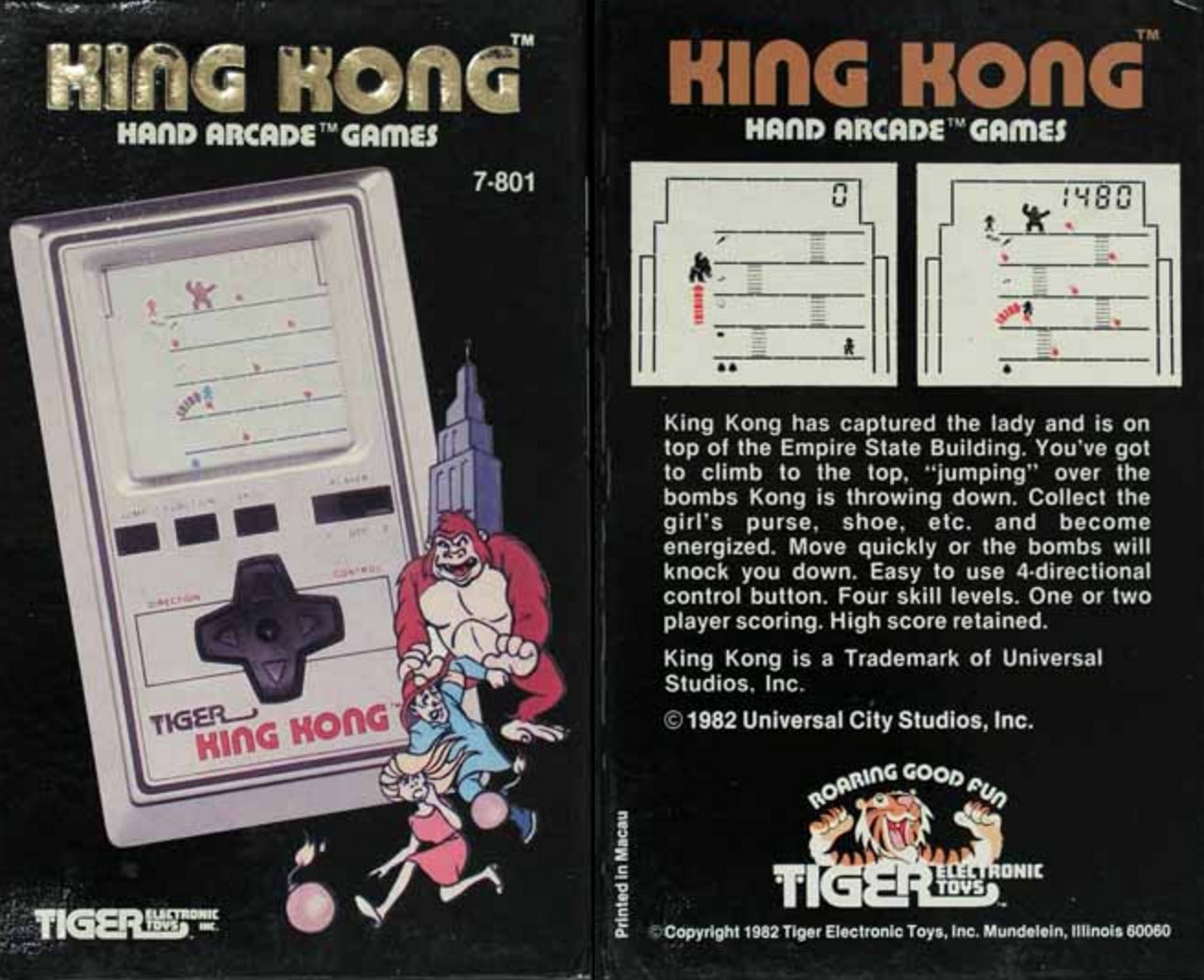
While Universal focused its sights on Nintendo’s Donkey Kong for copyright infringement, their own licensed game copied Nintendo. Somehow, Universal failed to notice that they sold the license to Tiger Electronics, allowing them to create a game for the iconic character. Their legal team focused on Nintendo since they wanted a piece of the profits from Donkey Kong. Thus, reports state that Universal became surprised when they discovered that Tiger Electronics not only created a game for King Kong but also copied Donkey Kong.
While Universal demanded some changes to Tiger Electronics’ game, the similarities remained present. Thus, this game featured straight rather than slanted girders while King Kong threw bombs at the hero. Speaking of the hero, he received a fireman’s hat to differentiate itself from Nintendo’s.
In the end, Tiger Electronics created several versions of their King Kong game while Universal lost their case with Nintendo. King Kong appeared in a tabletop LCD game as well as an Atari 2600 game, where the company took on the name Tigervision. Tiger Electronics even made a handheld of this game. Still, its place in Universal’s legal debacle makes this Donkey Kong knock-off memorable.
9. Sonic the Hedgehog 3
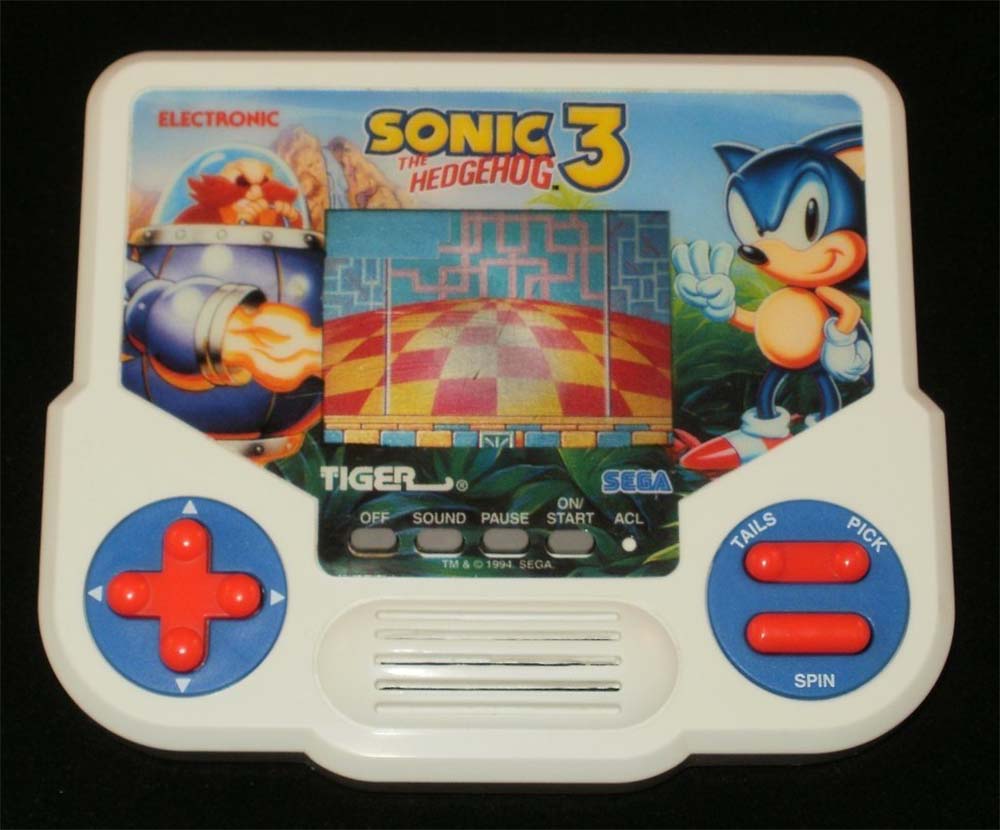
When you think of Sonic the Hedgehog, you think of speed and blast processing. Unfortunately, Tiger Electronics supplied none of that action when they created their handheld version of the blue blur. Not that you could tell that he was a blue hedgehog in the game. As with all the other LCD games, this game featured monochrome sprites. Luckily, rather than being stuck in the center, like prior Sonic the Hedgehog games from Tiger Electronics, this game permitted him to move from side to side.
One of the most ridiculous elements of this game was the background. In the Genesis version of Sonic the Hedgehog 3, there were bonus rounds that featured a mock 3-d checkerboarded realm. Tiger Electronics decided to use that checkboard for the static background in their handheld version. Thus, Sonic’s flat 2D sprite sticks out even more.
Still, any Sonic fans that enjoyed the platforming and multiple paths from the Sega games found little in this game. Sonic floated over vague black lines, so gameplay did not require platforming action. Also, there was no choice in paths to get to Eggman’s battles.
8. Nights into Dreams
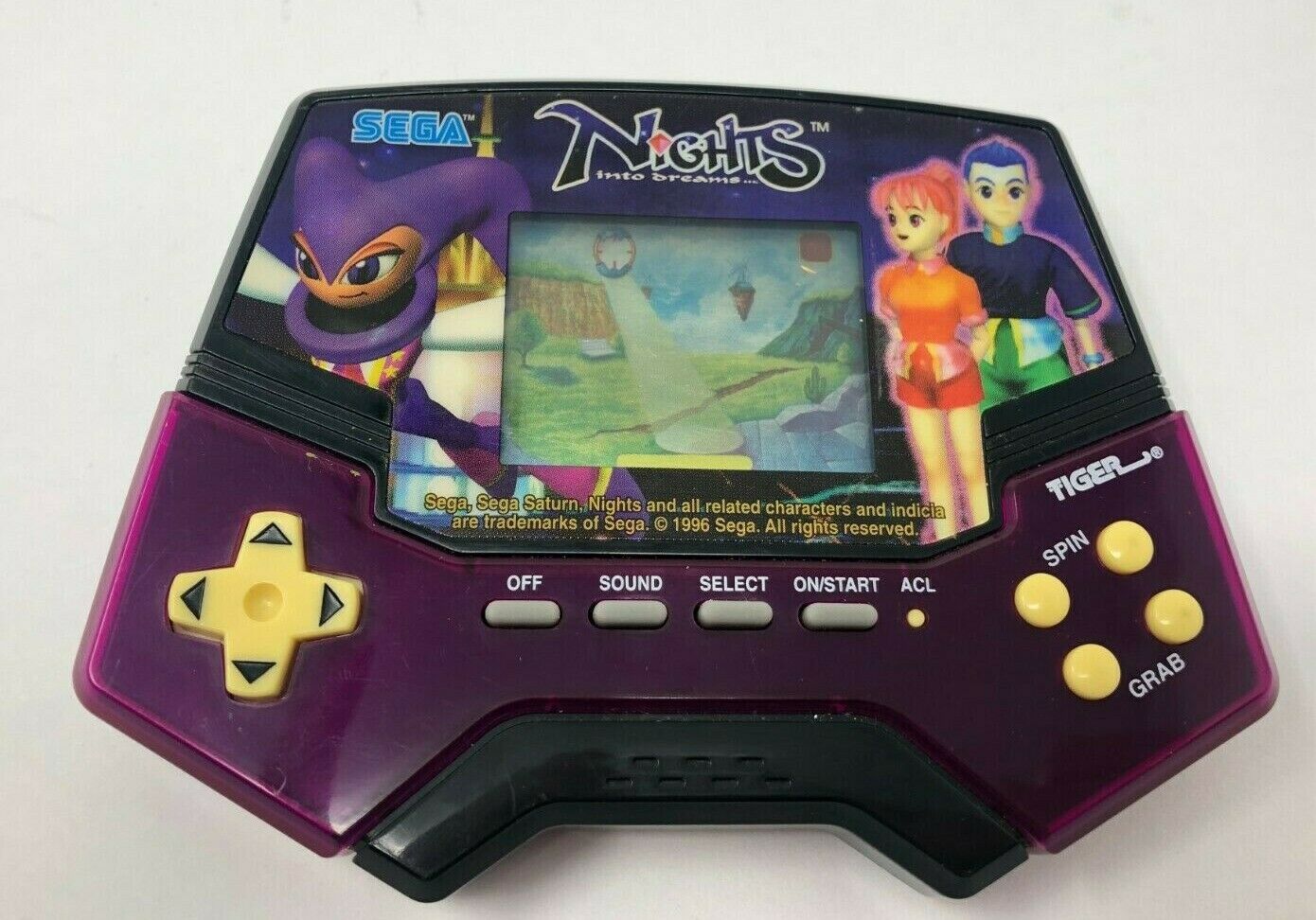
When Sega launched the Sega Saturn, they began testing the waters with 3D graphics and gameplay. Their strongest entry in these early days was Nights into Dreams, which featured gameplay that glid through all three directions available in the air. Unsurprisingly, this gameplay did not translate well when Tiger Electronics simplified it for their LCD handheld catalog.
Instead of gliding through a 3D realm, the LCD game made the sprite loop through a 2D space. With only a small outline of NiGHTS, players easily lost track of where they were. Moreover, the controls featured two spin buttons and two grab buttons, both of which did a different action. Thus, players had to be careful on which button they pressed, for they could accidentally spin counterclockwise when they wanted to spin clockwise.
At least this handheld stood out amongst the rest from Tiger Electronics. Instead of the typical white square case, they created a black case that had two protrusions where the thumbs would rest. So, this handheld looks more polished than most of Tiger Electronics’ catalog.
7. Outrun (Tabletop version)
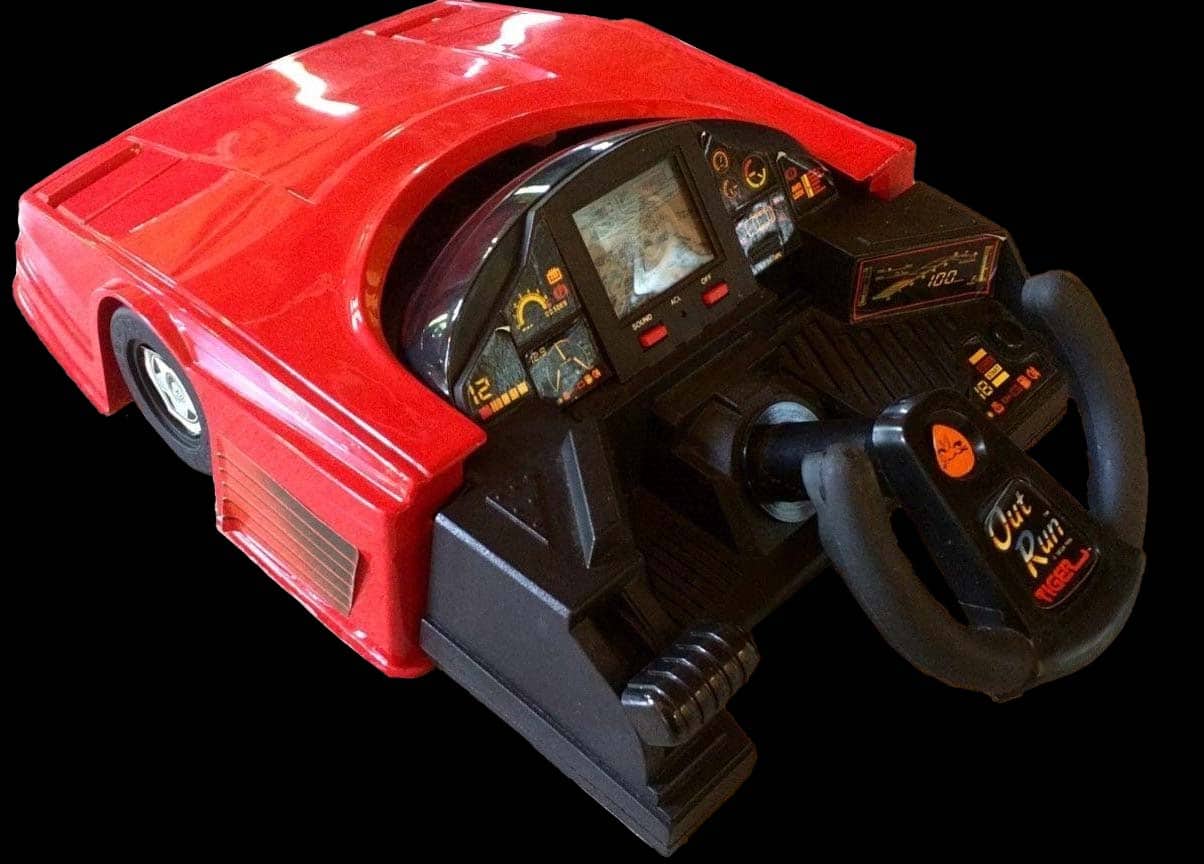
Tiger Electronics created two Outrun games, one for handheld and one for tabletop. When it came to the tabletop version, the game came with a case that resembled the front end of Outrun’s Ferrari car. Inside, the case provided several stickers that mimicked the dashboard of the car. Then, the tabletop version featured a steering wheel and clutch. However, they decided to set the clutch on the left side of the wheel rather than the right, where the arcade and most American cars place it.
Unlike the arcade version of this game, the LCD game did not supply any smooth graphics or decent frame rate. Thus, driving the car became a chore in this game. There was little visual feedback to help users understand whether they would make a turn or not.
Worse, while the game featured low and high gear, they forced the game to create a high-pitched droning noise. This constant noise indicated that the car was in high gear. However, the graphics barely helped show the speed.
6. Game.com
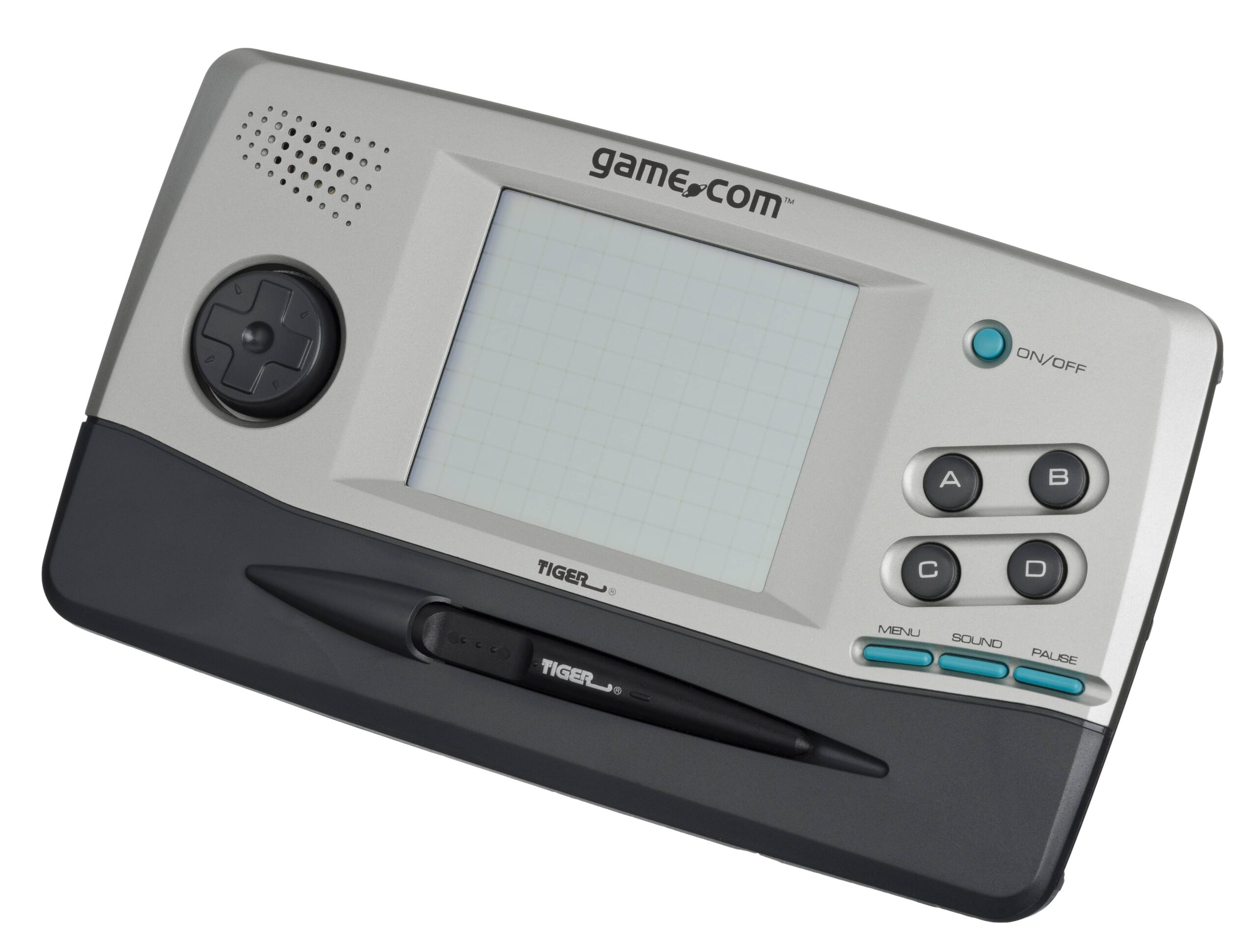
In 1997, Tiger Electronics believed that it was time for them to enter the console space in full to compete with the likes of Nintendo’s Game Boy. Their handhelds proved to be a hit with their budget price point and an ever-present cycle of games. Thus, they felt that they had a chance to make it as a console manufacturer. So, they introduced their handheld console that played cartridge games, the Game.Com.
Sadly, this console had a terrible screen with no backlight, only slightly better than their usual LCD games. The worst aspects of this screen were the blurring and low refresh rate, making the games sluggish on the console. Even the game that managed to reasonably run on this system felt lackluster in comparison to the Gameboy.
Then, Tiger Electronics included PDA functions with a stylus and touchscreen. They even included internet connectivity in this console. However, to use the internet on this system, users had to connect this machine to a modem. So, they confused their customers when it came to who this console was for.
This system only featured 21 games, with many, like Scrabble, barely attracting the attention of gamers. The few games that would have garnered attention, like Resident Evil 2, played poorly in comparison to their full versions on consoles like PlayStation.
Overall, this system failed to attract customers. It only sold about 300,000 units in total.
5. After Burner (Tabletop version)
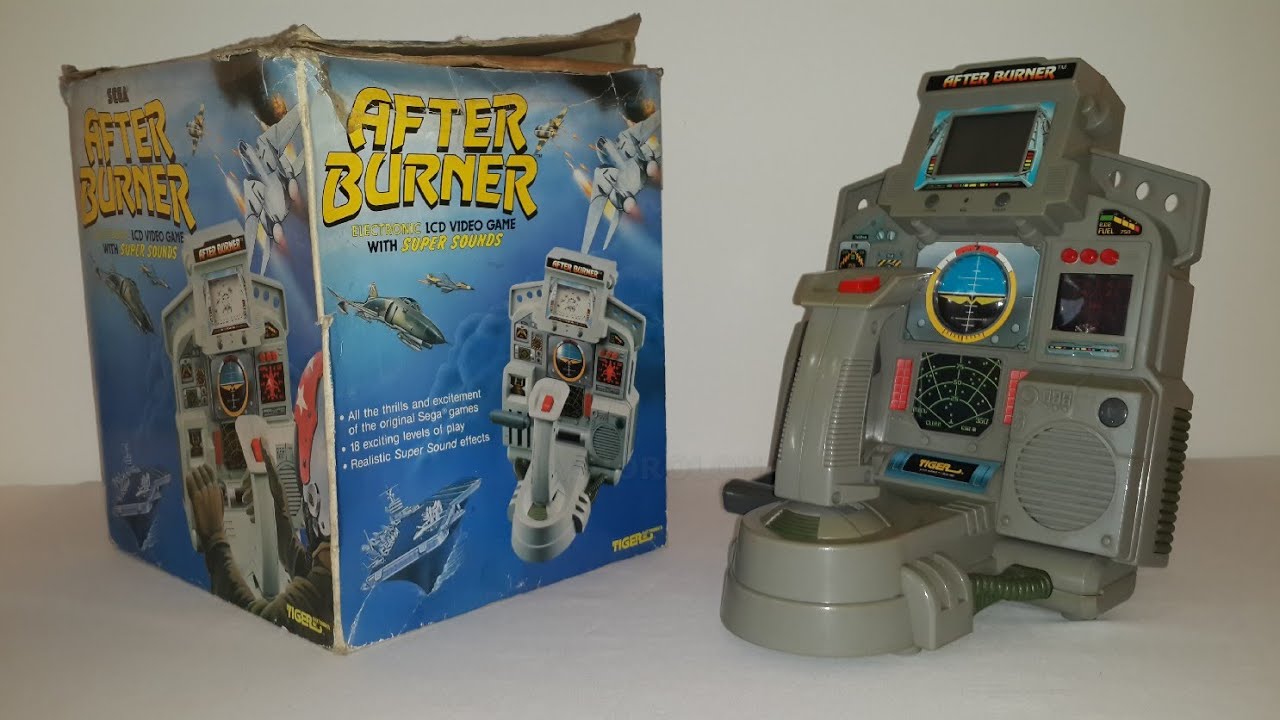
When people think of After Burner, they often imagine fast action soaring through the skies at Mach Speed. Sega’s arcade game became a big hit for allowing players to feel like they were piloting a fighter jet. So, Tiger Electronics had a lot to live up to when they created their LCD screen game for handhelds and tabletops.
When it came to the tabletop version, Tiger Electronics created a strong marketing arcade that emphasized action and excitement. They gave the impression that the game would allow players to feel like they were piloting a fighter jet, as in the arcades. The reality was another thing.
While the game stood tall, most of the plastic molding only existed for decoration. Thus, while many stickers simulated the appearance of a cockpit, they only helped the unit look appealing. The main parts that pertained to the game were the joystick, a few buttons, and the LCD screen. Though there was also one more screen on the unit that did light up when the player died on screen. This unit featured an acceleration lever that moved a meter. However, it barely affected gameplay, only making the bottom of the screen scroll faster.
The worst part of this game was the slow gameplay, which paled in comparison to its arcade counterpart. The game slowly moved forward, only having basic movement from side to side. Also, enemies could only become viable targets once they were in range.
4. Game.com Pocket Pro
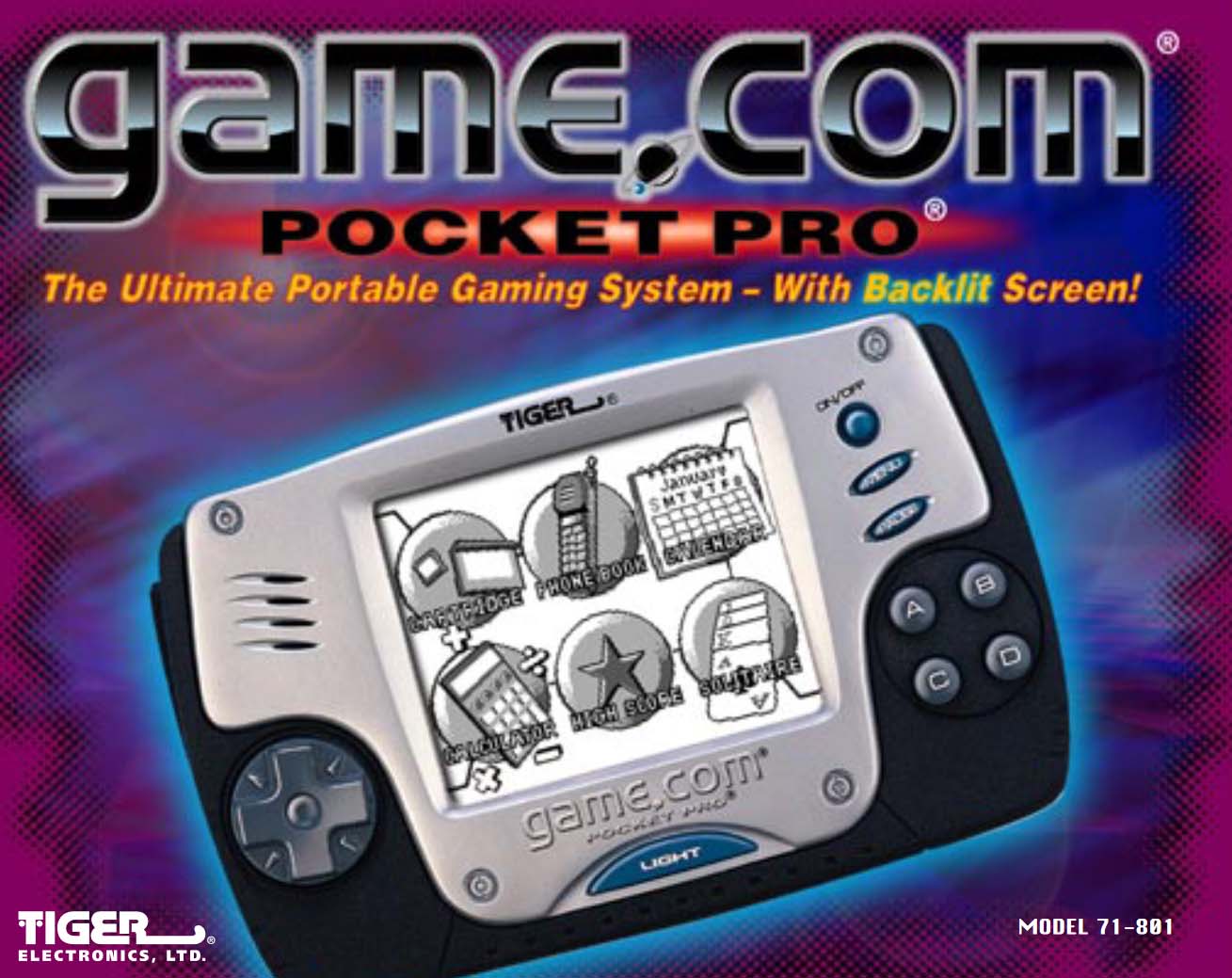
Despite the failure of the original Game.Com system, Tiger Electronics still tried to create success by redesigning and releasing the system as the smaller Pocket Pro. To their credit, this system only took up a fraction of the space that the original system did. They also removed the area for the stylus in the front of the system, moving it to the back of the system instead. They also reduced the number of cartridge slots from two down to one.
To their credit, Tiger Electronics now included a light in the system, which addressed one of the complaints about the original system. Sadly, they did not actually improve the original screen. Instead, they reduced the size of the original touch screen, leaving many of the same blurring issues. Moreover, the lights on the screen were set in front of the screen, so it was not backlit.
This system fared no better than the original Game.Com system. So, both the Pocket Pro and the original version failed commercially.
3. Batman (Tabletop version)
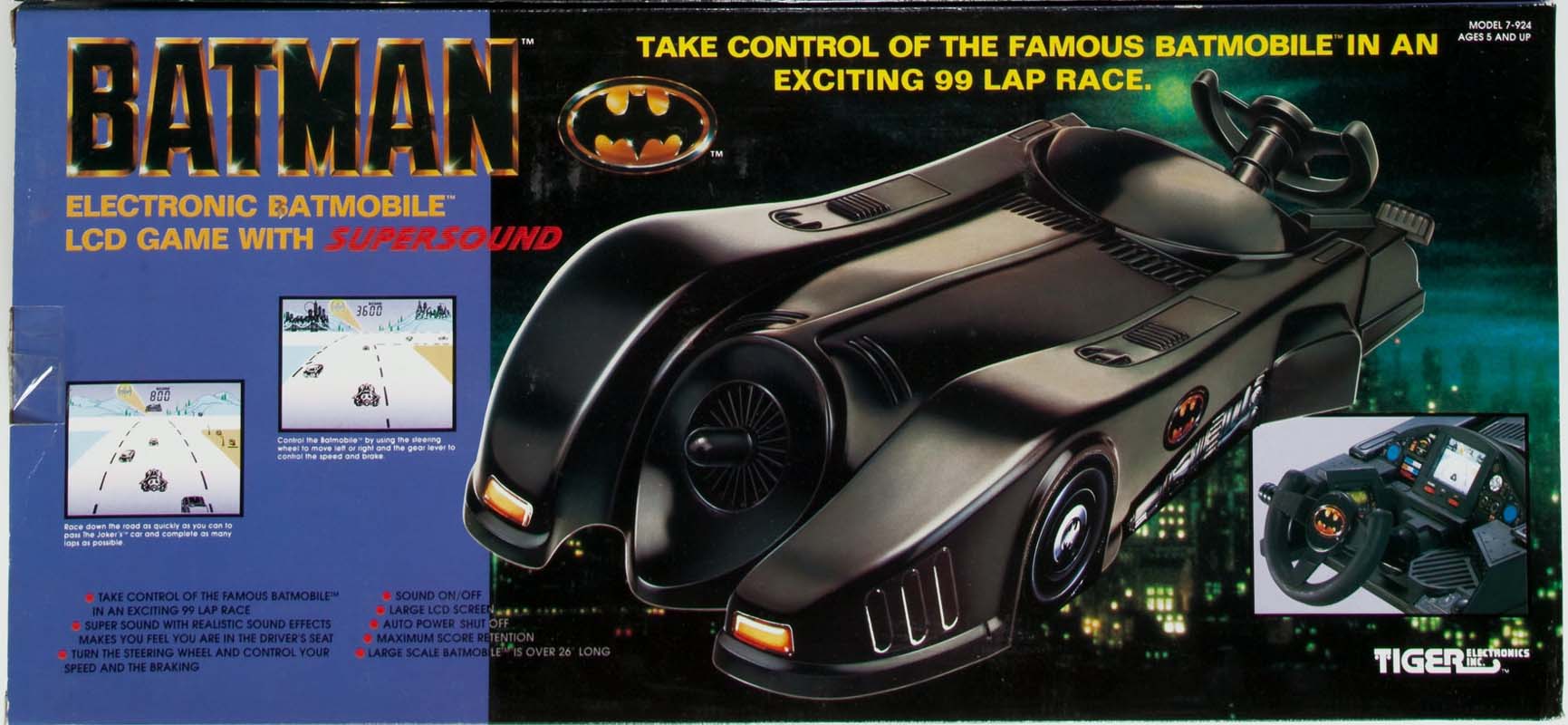
Unlike their handheld Batman game, Tiger Electronics decided to focus on the batmobile for their tabletop game. Unfortunately, for many versions of this game, they created a plastic housing that took up a lot of room. Where the batmobile from Tim Burton’s films created an iconic look with its long front end, this same front end did no favors for space-conscious people. This frame made the tabletop version twenty-three inches long. Moreover, Tiger Electronics created this monstrosity only for appearance, for the electronics were all contained near the LCD screen.
Beyond the mold for the batmobile, Tiger Electronics also included several decals of buttons near the steering wheel, none of which controlled the game. Instead, the steering wheel and a few other buttons that turned on the sound or system controlled the game.
Unlike the handheld game from Tiger Electronics, this tabletop LCD game was a driving game. In this game, players drove the Batmobile and avoided collisions, like from Joker’s cars. Players had three lives to rack up as many points as they could.
2. Battlevision

Around 1994, Tiger Electronics decided to make a new form of digital entertainment, a playset that interacted with a VHS cartoon. Thus, they created Battlevision, one of the few VHS-based gaming systems created in the 1990s. This game included one single VHS tape, with the Doom on You cartoon. While they advertised this playset as the first fully interactive action playset, other manufacturers had created similar ideas before.
This playset featured several weapons and sections. For instance, it had plasma cannons that would “blow up” via a spring-loaded mechanism. Likewise, the playset featured missile launchers and long-range rockets. Finally, the playset had a control panel with an embedded LCD screen that tracked the player’s score as well as the status of the weapons. Two articulated action figures also came with this playset. Finally, the playset featured a dome that protected the base’s research department, which was the most important part of the set to protect.
When playing the VHS, the player activated guns by pressing them down as indicated by the cartoon. As the user uses up ammo and takes damage, the control panel’s indicators lit up. Also, damage triggered spring-locked mechanisms that made guns fly and the dome open.
While other VHS-based systems did exist previously, the Battlevision did use newer technology. Rather than using flashing lights to activate the interactivity, the system relied on Video Encoded Invisible Light. The receiver then used the transmissions from the VHS to create the gameplay.
Notably, this playset has a cartridge slot, even though no known additional videos nor cartridges came out for it.
For an extensive look at this playset, please check out this video by Retro Game Living Room on YouTube.
1. The R-Zone
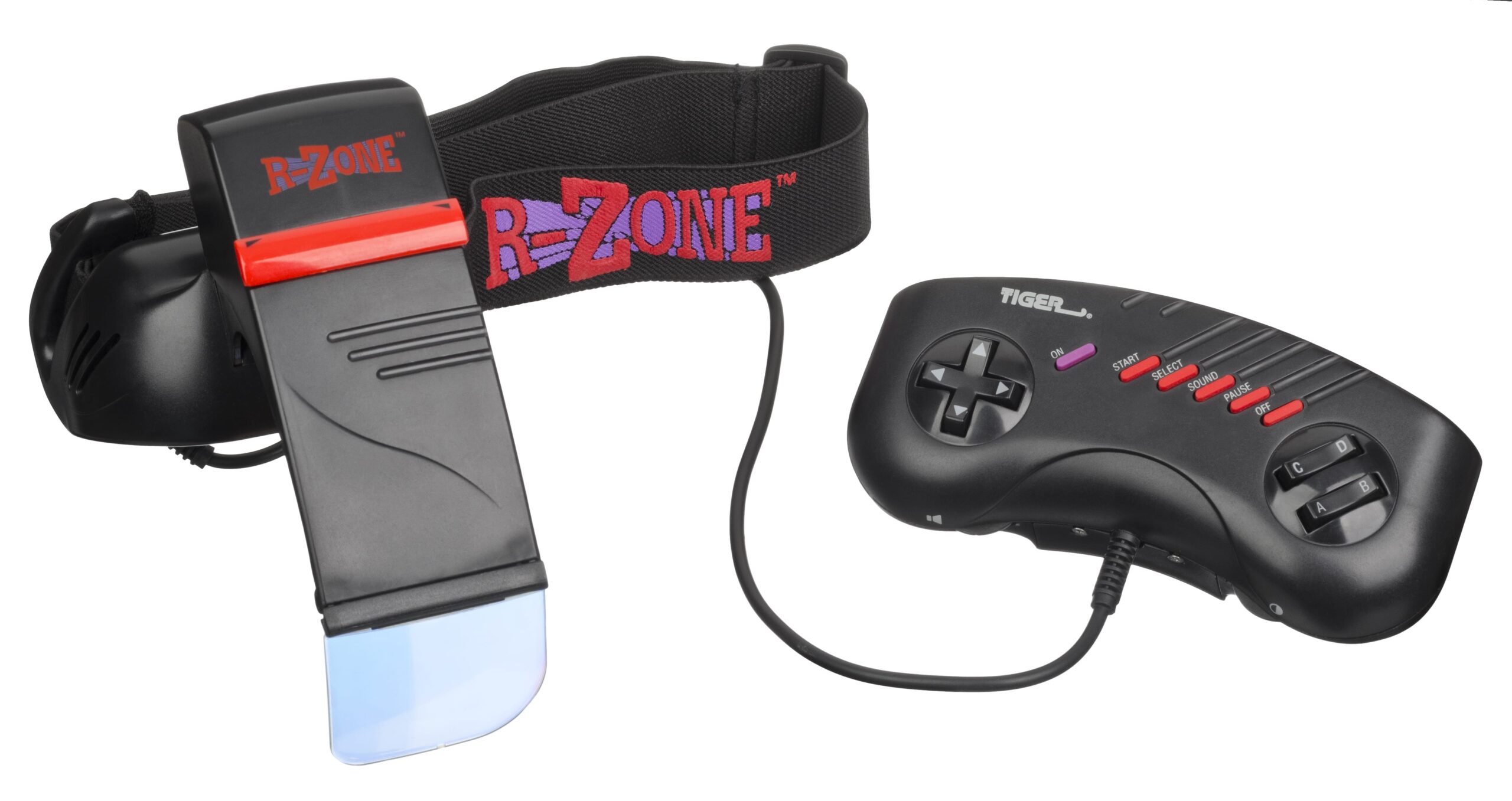
As Nintendo was preparing to introduce the world to their vision of Virtual Reality, Tiger Electronics decided to beat them to the punch with their spin. So, in 1995, Tiger Electronics released the R-Zone, a cartridge-based gaming system that featured headgear for its virtual reality headpiece. Rather than playing games on a screen, though, the system reflected the games into the user’s right eye via the transparent lens. However, these games only ever played in one color, red. Thus, Tiger Electronics managed to create an experience that even the headache-inducing Virtual Boy outmatched.
Then, there was the controller. Rather than creating a controller with standard buttons, like the Super Nintendo, Tiger Electronics chose to create switch-like controls for the A-D buttons. Then, there were many buttons beside start and select, like sound, pause, and off, that filled up the center of the controller. There was even a separate on-button on the controller itself. This undoubtedly led to reviewers proclaiming that the controls were confusing.
Amazingly, despite reviewers proclaiming it as one of the worst systems ever, Tiger Electronics produced variations on the R-Zone console. They released the R-Zone Super Screen in 1996, which allowed players to use a non-animated color background. Later, in 1997, Tiger Electronics released the R-Zone X.P.G. (Xtreme Pocket Game). This iteration removed the headset completely, though the system still projected graphics onto a mirrored surface. Finally, they created the R-Zone DataZone in 1996, which included a data organizer.
Tiger Electronics eventually gave up on the system in 1997. Still, they made an impact by making a system much worse than the Virtual Boy.
What Tiger Electronics handhelds and toys baffled you?
We have shared with you only a small sampling of the baffling and outrageous handhelds and toys that Tiger Electronics ever produced. However, this is only the tip of the iceberg. This company is well known for having created cheap electronic toys and devices that flooded store shelves. So, there are undoubtedly ones that we had not even thought of.
So, tell us about your experiences with Tiger Electronics toys in the comments below. Let us know if you have fond memories of them. Did you find any toys that flabbergasted you?
Do you have old and used Tiger Electronics handhelds and toys?
If you have a collection of old and used toys, you can turn those toys into cash. There is no reason to let those old toys collect dust. Contact us today to sell your Tiger Electronics handheld and toy collection.
About the Author
Chris Ingledue is the founder and owner of Wheeljack’s Lab pop Culture and Toy Shop. His vision has always been to reunite customers with their favorite childhood toys and pop culture, triggering fond memories, and reigniting their imaginations. Every day he works in the “lab” where it’s Christmas 365 days a year; scouring the internet – like we did the Sears Catalog of yesteryear – for the next great treasure, awaiting the arrival of the postman as if he was Santa Claus himself and helping collectors worldwide with their own versions of Christmas. For Chris, every day as a vintage toy buyer is an absolute joy!